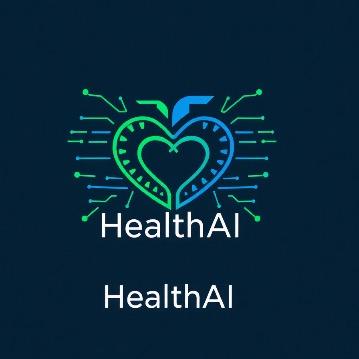HealthAI Assistant
HealthAI Assistant: Your personal AI-powered health companion, integrating smart diagnostics, appointment management, and vital tracking with blockchain security.
Created on 28th September 2024
•
HealthAI Assistant
HealthAI Assistant: Your personal AI-powered health companion, integrating smart diagnostics, appointment management, and vital tracking with blockchain security.
The problem HealthAI Assistant solves
HealthAI Assistant solves several key problems in personal healthcare management:
- Accessible Health Information: It provides an AI-powered chatbot that can answer health-related questions 24/7, offering reliable information and guidance when immediate access to a healthcare professional isn't available.
- Appointment Management: The app simplifies scheduling and tracking medical appointments, reducing missed appointments and helping users stay on top of their healthcare routines.
- Vital Signs Monitoring: By allowing users to log and visualize their vital signs over time, it helps in early detection of potential health issues and encourages proactive health management.
- Personalized Health Goals: The Recovery Goal feature helps users set and track daily health objectives, promoting better lifestyle choices and overall wellness.
- Data Storage: By integrating blockchain technology, it offers a secure way to store sensitive health information, addressing privacy concerns in digital health records.
- Continuity of Care: The ability to choose and consistently interact with a preferred doctor enhances the continuity of care, leading to better health outcomes.
- Health Awareness: Regular health tips and the sleep tracking feature increase users' awareness of various aspects of their health, encouraging healthier habits.
- Remote Health Monitoring: For healthcare providers, it offers a way to remotely monitor patients' vital signs and progress, enabling more timely interventions when necessary.
- Reduced Healthcare Costs: By promoting preventive care and early detection of health issues, the app can potentially reduce long-term healthcare costs for users.
- Integrated Health Ecosystem: It creates a comprehensive platform that brings together various aspects of personal health management in one place, making it easier for users to take control of their health.
Challenges we ran into
Key Challenges faced in developing HealthAI Assistant:
- AI Integration: Integrating the GaiaNet API for the chatbot was complex. We overcame this by carefully studying the API documentation and implementing robust error handling.
- Ethereum Wallet Integration: Implementing Web3 functionality presented challenges with different wallet states and network changes. We addressed this by creating a robust wallet connection system with proper error handling.
- Real-time Data Visualization: Creating dynamic charts for vitals tracking was initially difficult. We resolved this by leveraging the Recharts library and implementing efficient data processing functions.
- UI/UX for Complex Health Data: Designing an intuitive interface for complex health data was challenging. We iteratively refined our UI components, focusing on clarity and user-friendliness.
- Performance Optimization: As features increased, we faced performance issues. We optimized by implementing React hooks like useMemo and useCallback to reduce unnecessary re-renders.
These challenges were addressed through careful planning, iterative development, and leveraging appropriate libraries and best practices in React and Web3 development.
Tracks Applied (1)
Ethereum Track
ETHIndia
Discussion
Builders also viewed
See more projects on Devfolio
